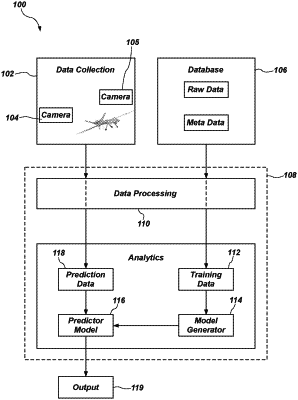| CPC G06V 20/17 (2022.01) [G06T 7/11 (2017.01); G06T 7/215 (2017.01); G06V 10/62 (2022.01); G06T 2207/30181 (2013.01); G06T 2207/30248 (2013.01)] | 32 Claims |

|
6. A system configured to classify a moving airborne target, comprising:
a camera in communication with one or more processors;
one or more memories operatively coupled to at least one of the one or more processors and having instructions stored thereon that, when executed by at least one of the one or more processors, cause the system to:
capture a plurality of images of the moving airborne target, the images being captured in a frequency of light in a first band ranging from 400 nm to 700 nm and a second band ranging from 700 nm to 1100 nm;
amplify microscopic temporal variations between the plurality of images of the target and generate a profile of a rate of change of at least one microscopic temporally detected variation of the geometry of the two-dimensional image of the target in the first band; and
measure a color intensity value of the moving airborne target based on the images of the airborne target captured in the second band and compare the color intensity value to a profile of known color intensity values corresponding to airborne biological and non-biological subjects.
|